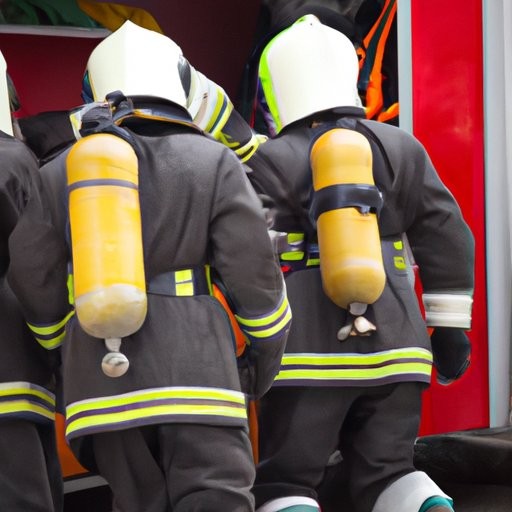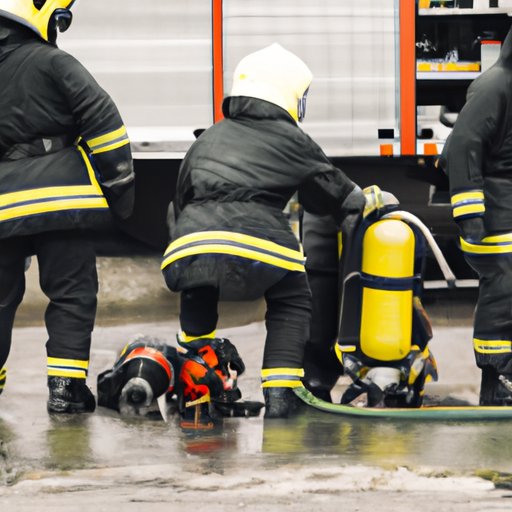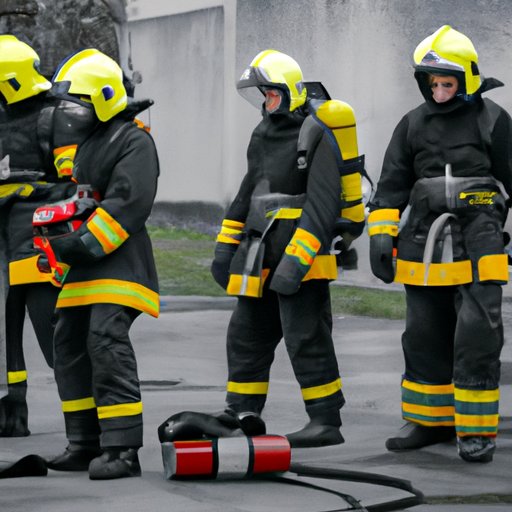Recent Blog Posts
Are Forever Chemicals in Your Water Supply? What You Need to Know
PFAS contamination in drinking water is a critical issue in the United States, with these persistent chemicals posing significant health risks. Grasping the impact of PFAS and learning how to mitigate them is essential for safeguarding our water supply.

What Are PFAS and Why Are They a Concern?
PFAS, or per- and polyfluoroalkyl substances, are synthetic chemicals used since the 1940s in products like non-stick cookware and firefighting foams due to their resistance to heat, water, and oil. Unfortunately, their durability also leads to environmental persistence and contamination.
How Can PFAS in Your Drinking Water Impact Your Health Long-Term?
Per- and polyfluoroalkyl substances, or PFAS, are causing concern in public health and environmental sectors due to their widespread presence in drinking water across the Nationwide, United States. Known as "forever chemicals" for their persistence in the environment, PFAS pose significant long-term health risks. Understanding these risks is crucial for individuals and policymakers alike.

What Health Risks Are Associated with PFAS in Drinking Water?
Exposure to PFAS through drinking water is linked to several serious health conditions. Research indicates that long-term exposure can result in cancer, liver damage, and immune system issues. Additionally, PFAS have been connected to reproductive and developmental problems. Because PFAS accumulate in the body, even low levels of exposure over time can become hazardous.
Understanding PFAS: Future Regulations for Firefighting Foam Safety
Firefighting foam, especially Aqueous Film-Forming Foam (AFFF), is essential for extinguishing fuel fires rapidly. However, the presence of Per- and Polyfluoroalkyl Substances (PFAS) in these foams has raised health and environmental concerns. As awareness increases, regulatory bodies are moving towards stricter controls on these foams. This article explores potential future regulations and their impact on safety.

Why Are PFAS in Firefighting Foams a Concern?
PFAS are synthetic chemicals renowned for their persistence in the environment and human body, often referred to as "forever chemicals." They have been associated with health issues such as cancer, liver damage, and immune system problems. The use of AFFF containing PFAS at military bases, airports, and fire stations has led to soil and groundwater contamination, posing risks to human health and the environment.
PFAS-Free Turnout Gear: A Guide to Eco-Friendly Firefighting Options
Firefighters depend on turnout gear for safety, but growing concerns about PFAS (per- and polyfluoroalkyl substances) in this gear are prompting a shift. Known for their persistence in the environment and potential health risks, PFAS are becoming a focal point for eco-friendly firefighting solutions and legal scrutiny.

Why is PFAS-Free Turnout Gear Important?
PFAS are synthetic chemicals prized for their resistance to heat, water, and oil, making them prevalent in firefighting gear. However, these "forever chemicals" linger in the environment and human body, posing health risks such as cancer and hormonal disruptions (EPA, 2024). By May 2025, state laws are expected to further address these issues. Firefighters in Nationwide, United States are increasingly pursuing legal action against manufacturers for not warning about these dangers (NIH, 2024).
The Persistent Progression of Firefighting Foam: Key Developments
Firefighting foam, particularly Aqueous Film Forming Foam (AFFF), has been an essential tool in combating fuel-based fires for decades. However, its use has raised concerns due to potential health risks. This article explores the history of firefighting foam, its health implications, and the legal issues surrounding its use.

What Is the History of Firefighting Foam?
Developed in the mid-20th century, firefighting foam revolutionized fire suppression techniques. AFFF, in particular, was a breakthrough, effectively extinguishing fuel fires by creating a barrier between the fuel and oxygen. Its widespread adoption in military bases, airports, and local fire departments was due to its proven effectiveness.
However, concerns have grown over the environmental and health impacts of AFFF. The foam contains per- and polyfluoroalkyl substances (PFAS), notorious for their persistence in the environment and accumulation in the human body. These "forever chemicals" resist breakdown, leading to long-term contamination of water sources and potential health risks.
Understanding PFAS Health Risks for Firefighters: A Comprehensive Guide
Firefighters encounter numerous hazards, with PFAS (per- and polyfluoroalkyl substances) being one of the less visible yet significant threats. These chemicals, prevalent in firefighting foams like AFFF (Aqueous Film Forming Foam), pose serious health risks. Understanding these risks is essential for firefighters nationwide.

What Are PFAS and Why Are They Dangerous?
PFAS are synthetic chemicals used across various industries, including firefighting, due to their resistance to heat, water, and oil. This makes them effective in AFFF for combating fuel-based fires. However, PFAS are dubbed "forever chemicals" because they persist in the environment and accumulate in the human body over time.
The primary concern with PFAS is their potential to cause health problems. Research links PFAS exposure to severe conditions such as cancer, liver damage, and hormonal disruptions. Firefighters, who frequently use AFFF, are particularly at risk. The lack of immediate symptoms complicates addressing the long-term effects of PFAS exposure.
5 Key Insights on DOD's Fluorine-Free Firefighting Foam Research
The Department of Defense (DOD) is spearheading efforts to discover alternatives to traditional firefighting foams that contain PFAS (per- and polyfluoroalkyl substances). This research is crucial due to the significant health and environmental risks posed by PFAS. By investigating fluorine-free firefighting foams, the DOD aims to revolutionize future firefighting practices and regulations.

Why Is the DOD Researching Fluorine-Free Firefighting Foams?
The DOD is prioritizing fluorine-free firefighting foams because of the severe health risks associated with PFAS. Known as "forever chemicals," PFAS persist in the environment and are linked to serious health issues, including cancer and hormonal disruptions. The DOD's mission is to identify alternatives that ensure safety for both firefighters and the environment.
Firefighting Foam Lawsuit: 2025 Update & Compensation Guide
Firefighters in the United States are confronting a new threat: the health risks linked to Aqueous Film Forming Foam (AFFF). Once essential for combating fuel-based fires, AFFF is now associated with serious health issues, prompting numerous lawsuits. For those affected, understanding these legal actions is vital.

What Is AFFF and Why Is It Dangerous?
Aqueous Film Forming Foam (AFFF) is designed to suppress flammable liquid fires by creating a barrier over the flames. However, it contains per- and polyfluoroalkyl substances (PFAS), notorious "forever chemicals" that persist in the environment and the human body.
Reducing PFAS Levels: How Blood Donation Helps Firefighters
Firefighters encounter numerous hazards on the job, one of which is the exposure to PFAS (per- and polyfluoroalkyl substances). These chemicals, prevalent in firefighting foams like Aqueous Film Forming Foam (AFFF), have been associated with severe health issues. Emerging research suggests that blood donation could help decrease PFAS levels in the body, providing a practical solution for firefighters managing these toxic exposures.

What Are PFAS and How Do They Affect Firefighters?
PFAS are man-made chemicals used since the 1940s for their heat, water, and oil resistance. They are especially common in firefighting foams such as AFFF. Known as "forever chemicals," PFAS persist in the environment and human body. Firefighters face heightened risk due to frequent AFFF use during training and emergencies. This exposure is linked to health issues like cancer, thyroid disease, and liver damage, underscoring the need to reduce PFAS levels in the bloodstream.
Understanding PFAS Risks in Firefighting Foam: A Comprehensive Guide
Firefighters in the United States have long relied on Aqueous Film Forming Foam (AFFF) to combat fuel-based fires. While effective, this foam contains per- and polyfluoroalkyl substances (PFAS), which pose significant health risks. This guide delves into the dangers of PFAS in firefighting foam and the legal implications for those affected.

What Are PFAS and Why Are They Used in Firefighting Foam?
PFAS, or per- and polyfluoroalkyl substances, are synthetic chemicals prized for their resistance to heat, water, and oil. These properties make PFAS ideal for use in firefighting foams like AFFF, designed to suppress fuel-based fires. However, these same traits also cause PFAS to persist in the environment and accumulate in the human body.


